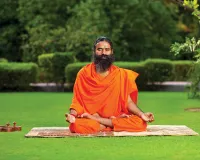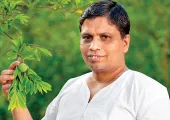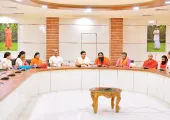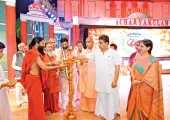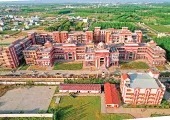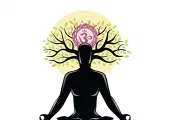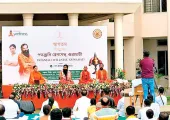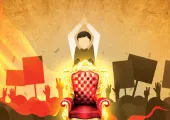Contents of Text Books for Indian System of Education
On

Dr. Chandra Bahadur Thapa Finance and Legal Advisor
Indian Board of Education and Legal Consultant Patanjali Group
In fact, education means acquisition of knowledge. Knowledge is used for the all-round development, promotion and prosperity of the creation, including the nation and the whole world, through individual and society. Knowledge is the product of the physical, intellectual and social activities of people, the expression of ideas about the objective properties and relations of the world in the form of signs, natural and human elements, which are continuously transferred from child to old age from generation to generation through the education system, as the case may be. or with refinements and additions. With a choice or a thought in life, all-round development does not take place. In the course of life's development, many choices, or attempts to make many kinds of thinking come to fruition, along with all-round development, get countless happiness, small and big, which we can use as Shruti, Smriti, or written for the future of our children. Left unwritten literature or carved in any material or paper. Usually the progeny cherish these as heritage, convey it to their progeny, thus it becomes a teaching method for the transfer of knowledge.
In ancient times, India was called Vishwaguru because of the education system and the education of that time has been adorned with similes like the source of light, insight.
Antarjyoti, Timirandhasya Gyananjana Shalakaya l
Chakshurunmilitam Yena Tasmai Sri Gurave Namah ll
This means, the one who opened the eyes of people blinded by darkness in the form of ignorance with the form of knowledge, salutations to that guru.
The belief of that era was that just as light is the means to remove darkness, in the same way education is the means to remove all doubts and illusions of a person. In ancient times, it has been emphasized that education gives an accurate view of life and enables a person to live from birth till death on the basis of religion, earning wealth, enjoying the opulence of sex, obstacles of the world ocean. By crossing it, one can finally attain salvation, which is the ultimate goal of human life.
Education and Knowledge
Education is a structured formal process that exposes the knowledge acquisition method to the intrinsic qualities and strengths of formal institutions such as schools and universities. Education is a lifelong process, it goes on continuously from birth till death of human being. The process of education is never static, because it is a dynamic activity, which goes on continuously and helps in human development.
At the time of birth, the child's mind is like a blank paper, as the child comes in contact with the external environment, in the form of sensations, the signs of objects start getting imprinted in the brain, thus the material of knowledge is removed from the external environment. Comes. True knowledge originates from the intellect, only through the intellect can certain, true and universal knowledge be obtained, thus knowledge is related to our birth i.e. innate but the truth or falsity of knowledge is tested by experiments. She goes. In this way we have a wide range of ideas, facts, principles and knowledge. The potential of the conscious material is made real by reasoning, with experience one can initiate action to fulfill the object of knowledge, but experience in itself does not give knowledge. Reasoning is needed to form knowledge.
One of the chief characteristics of the mind is anxiety as well as ignorance, which is the real root (root) of all kinds of physical and mental deviations, and tends to lead more often to evil than good, increases hatred and leads to heinous acts. seems to do. Through yoga practice, mental restlessness is controlled and focused on one point and efforts are made to completely destroy ignorance, the root of evils. To focus the mind in yoga practice, some physical and some mental activities are done so that any negative thoughts can be pacified and can be turned towards positivity.
There are two types of knowledge in justice- 'Prama' and 'Aprama'. The knowledge arising out of mere sanskar is called 'memory', and the knowledge different from memory is called 'experience'. These 'experiences' are of two types - real experience and unreal experience. Real experience is the experience of the thing as it is (yathabhutortho yasmin sah). Experiencing the phenomenon in the form of a decrease would be called reality. The second name of real experience is 'Prama'. Tadvati tatprakasakaanubhav: prama (that is, the thing which is as it is of the same kind). Direct inference comes under the analogy and words, prama, while memory, doubt, confusion and reasoning come under Aprama.
Right to free education
The right to free education was resolved by the United Nations General Assembly on 16 December 1966. (General Assembly resolution 2200A (XXI), and the International Covenant on Economic Social and Cultural Rights, which came into force on 3 January 1976, (including the right to labor and the right to health, the right to education and an adequate standard of living) As of July 2020, 171 countries, including India, have signed Article 13 of which recognizes the right of all to free education (Resolution Article 13 (2) (a) and (b) Free for primary level, and 'Efforts to move towards free education' for secondary and higher level).
Article 13.2 of the above resolution lists a number of specific steps to achieve the right to education, which are required to be followed by various government non-governmental organizations in the participating nations, etc. These include the provision of free, universal and compulsory primary education, generally available and accessible secondary education in various forms (including technical and vocational training) and equitably accessible higher education. All these should be available to all without any discrimination. Participating nations should develop school systems (although this may be public, private or mixed) that seek to make education free at all levels, either immediately or progressively, while encouraging or providing scholarships for disadvantaged groups give priority to the need, where 'primary education shall be compulsory and free to all', secondary education shall be generally available and accessible to all by every suitable means, and in particular step towards free education and higher education to all (on the basis of ability, through every appropriate channel, and in particular by progressively moving towards free education)'.
In pursuance of this resolution, the Government of India enacted the Right to Education Act 2009 (RTE-2009) in the Parliament of India on 4 August 2009, which came into force on 1 April 2010, and is 6 to 14 years old. Guarantees free education to children of
Book and text book
A book or book is a collection of written or printed pages. Digital books are called e-books while handwritten books are called manuscripts. A book as a bulk material is usually a bundle of rectangular pages made of paper, papyrus, parchment or birch paper and which is tied at one end (from the right or left side) or by sagging or by some other means. • Consolidated in such a way that it is easy to read. Today books are not only available in physical form, but due to the communication revolution they are available in e-books and other forms as well. The place where many books are kept in an orderly and systematic manner is called a library.
When the knowledge of a subject is presented in an organized manner in the form of a book at one place, it is called a text book. The National Curriculum Framework 2005 considers the textbook to be part of a package of teaching-learning materials and states that "a textbook is a guide material used as a guide to enable the student to actively interact with the text, ideas, objects, environment and people". connects and builds their understanding in them, it is not something that serves to fill the minds of children as the end product of knowledge".
Textbooks have the same place in the education system as the holy books in our religions. It would not be wrong to say that the process of teaching-learning begins and ends with the text book, even various types of activities are organized, teacher-student interaction, examination, etc. The book is focused. Due to its superfluous importance, the text book has adopted a dignified and standard framework. The text book has become a symbol of dominance that is hard to demean.
Teaching method
In Indian traditional teaching process, the curriculum and curriculum were taught in a fun way using the oral method. After that, it was called for contemplation. The teachers also used the method of question and answer, debate and debate. Through this, the qualities of thinking-contemplation, judgment and personality were developed. The monetary system was also prevalent during this period. The upper class students taught the lower class students. In this period, from the simple to the difficult, from the known to the unknown and the methods of addition and subtraction were also used. The living example of how the disciple was trained and trained by the Guru to do the right thing by being strong and without doubt in a critical situation, is the Srimad Bhagavad Gita, which contains the goals of human life, the opposite tendencies of good (divine) and bad (demonic) and their Indicative behavior, the effects and consequences of both tendencies, Scriptural acceptable and discarded behavior, etc. (as applicable to the child-aged), are described in a very picturesque and simple way. What should be contained in the curriculum and curriculum? So that a human being can be made truly self-supporting, world-useful and devoted to God, without undesirable demonic tendencies, its indications are found in the sixteenth chapter of Shrimad Bhagavad Gita. In fact, the goal of man's life is to be absorbed in the divine and for this purpose in the sixteenth chapter of Shrimad Bhagavad Gita, fulfilling all his desires, by earning money religiously from lust, anger, greed, attachment. What are demonic tendencies, what do they get from their influence? and • In which direction should the person's efforts be made and what should be discarded?, as in the following half-verse, two types of human tendency are described.
Dwau Bhootsargi Lokasmindaiva Asura Eva Ch..16.611
(In human society, there are good and bad types of people with the tendency of divine wealth and those with the tendency of demonic wealth, that is, good and bad types of people).
In the following 3 verses, 25 signs of divine wealth have been given, namely
Abhay Sattvasamsuddhijnanayogavyavasthih l
Danam Damascha Yagyascha Swadhyayastap Arjavam ll 16.1 ll
(1) Absolute absence of fear, (2) Complete purity of conscience, (3) Continuing firm position in meditation yoga for philosophy, (4) Sattvik donation, (5) suppression of sense cravings, (6) Yagya (worship of God, deities and masters and conduct of good deeds like Agnihotra etc.), (7 ) Reading and reciting Vedas and scriptures, self-study, (8) suffering for self-righteousness and (9) ease of conscience with body and senses.
Ahimsa Satyamakrodhastyagah Shantirapaithunam I
Daya Bhooteshvaloluptavam Mardavamheerachapalam II 116.2 II
(10) non-violence (not to hurt anyone in any way with mind, speech and body), (11) Satya (true and sweet speech - in the same kind of dear words as decided by the conscience and the senses The name of saying is 'true speech'), (12) Akrodh (the absence of anger even on the one who harms oneself), (13) renunciation (renunciation of the pride of doership in actions), (14) Shanti (uptari of the conscience i.e. the mind). Lack of playfulness, (15) Apaishun (not blasphemy, stealing or deceitful to anyone), (16) Mercy without any greed or motive, (17) Mardava (Mriduta - softness of heart) and sarcasm), (18) Hri (that mood which naturally or because of hesitation, defect etc. does not allow one to raise his head or speak in front of others, shame), (19) Achapal (that which is not unstable, fickle, with the objects of the senses In spite of coincidence, there is no attachment in them, softness, shame in conduct contrary to folk and scripture and lack of vain efforts).
Tejah Kshama Dhritih Shauchamadrohonatimanita I
Bhawanti Sampadam Daivimabhijatasya Bharata II 16.3 II
(20) Brightness (that of superior men, due to whose influence even men who are possessive and lowly nature in front of them often stop iniquity and indulge in noble deeds according to their statement), (21) forgiveness, (22) patience, (23) defecation (External purification of the body), (24) Adroha (not having any enmity in anyone), (25) Not excessive respect (lack of pride in one's reverence) - are the symptoms of those born with divine wealth. And, in the following verse 6 signs of demonic wealth are given, namely
Dambho Darpoabhimanashcha Krodhah Parushyameva Cha l
Agyanam Chabhijatasya Partha Sampadmasurima II 16.4 ll
(1) Arrogance (false ostentation to show importance or to prove purpose, ostentation to deceive, hypocrisy), (2) Pride (the feeling of considering oneself to be more capable, capable or superior than others), (3 ) Pride (unfair perception of one's prestige or dignity and authority), (4) Anger, (5) Man. (Hardness; bitterness; harshness), (6) Ignorance (state or feeling of lack of knowledge) - all these are symptoms of the demonic possession.
Then in the following half-verse, the results of both the estates are given, as
Daivi Sampadvimokshaya Nibandhayasuri Mata II i.e., divine wealth is believed to lead to liberation and to bind demonic wealth.
In the end, in the following 4 verses, the form of lust, anger and greed, the destroyer of the soul, that is, those that lead it to degradation, the three types of renounced conduct as the gates of hell, the achievement by renouncing these, the degradation by not giving up and the scriptural actions recommended to do, as,
Trividham Narakasyedam Dwaram Nashanamatmanah I
Kamah Krodhastatha Lobhastasmadettrayam Tyajet 16.21.
Lust, anger and greed - these are the gates of three types of hell (the root of all misfortunes and the purpose of attainment of hell), destroyers of the soul, that is, they are going to lead to its degradation, therefore these three should be abandoned.
Aetairvimuktah Kaunteya Tamodvaraistribhirnarah I
Achartyatmahanah Shreyastato Yati Param Gatim II 16.22 II
A person free from these three hell gates conducts his own welfare, is attained in credit, and by this he goes to the supreme state.
Yah Shastravidhimutsrijya Vartate Kamkartah I
Acharatyatmanah Shreyastato Yati Param Gatim II 16.23 II
Whoever renounces the method of scripture and acts according to his desire, he neither attains siddhi, nor attains supreme progress, nor does he attain happiness.
Tasmachhastra Pramanam Te Karyakaryavyavyavasthitau I
Ganthva Shastravidhanokta Karma Kartumiharhasi II 16.24 II
The scripture is the proof in the system of work and non-action (duty and non-duty), therefore actions should be performed according to the scriptural law.
How are the contents of the text book?
The text book had more importance in the past and also enjoys the popularity of the general public today, because the text book is specially prepared for the students and teachers in the school or class, which is the text of any one subject or related subjects. Presents. Modern era is the era of globalization has been progressively including various communication and travel modes, especially the Internet, cloud-computing, artificial intelligence, with the invention and development of new resources, the entire world has become a truly accessible destination and has proved the world in a nation-like environment from the Covid-19 pandemic. In such a situation, to restore its ancient glory, India will have to make the education system all inclusive as well as consciously by making radical changes in the old structure, especially the method of the last 1000 years.
At present, the text book for teaching in India should be according to the National Curriculum Framework 2005 and the National Education Policy 2020, the curriculum and the curriculum based on it, which is thoroughly tested by the National Council of Educational Research and Training (NCERT National Council of Educational Research and Training). after it is approved. Curriculum and curriculum have approved class-wise subject matter outlines, which are prepared by the experts or experts (mostly teachers) of the subject concerned for reading in the form of textbooks for the prescribed class. Therefore, subject experts have a special role in the preparation of the text book and mostly their personal thinking is also reflected, such as glorifying the people of a particular sect in history by hiding their evils and vices, hiding the goodness of other sects. Showing their imaginary evils and backwardness, denying the struggle and valor of their ancestors, calling the invaders and evil rulers reformists, glorifying the leadership of a particular family, events of public and national importance and important public related to them. Either to negate or misrepresent, to interpret the scriptures as half-hearted quotes, etc.
Therefore, in the preparation of any text book, the contents of these are very carefully, keeping in mind the long-term future of the nation and society, keeping in mind the contemporary as well as the ancient works, without being influenced by the personal views of the experts. Truth and fact based should also be prepared taking into account the demands of the local situation including age, class and expected mental capacity of the apprentice. Mainly keeping the following points in mind, the students will be ready to become the right citizens of the nation by reading the text book and will play an important role in making India a world leader again.
-
The text material and the contents of the text book are to be combined in such a manner that from the initial stage of admission to the school since childhood, without laziness, respecting parents and teachers, truth-speaking and devoted to upholding truthfulness, devoted to society, nation and collective welfare, with interest in study, teaching and taste, ready to counteract evil tendencies. Along with new thinking and always become those who have a fervent desire for creativity.
2. The subject matter should be prepared according to the age, who can at least write and read in his mother tongue, if he has to leave studies after being educated till the first grade, can behave like a literate person; When educated up to the fifth standard, can guide the people studying below them, if the need arises, the adult educated till the fifth can carry on their daily routine, is ready to take responsibility for the maintenance of the family, studies till the eighth grade Even if he had to leave, he could live a life of self-reliance with some crafts etc., taking the responsibility of bearing himself and his brother, if necessary, could support the parents in the family, Hindi, Sanskrit and English including his mother-language in foreign language. be able to behave That is, an educated person from Pre-primary to VIII basically knows and understands the basic requirements for life so that he does not have to be helpless in any adverse situation when necessary.
3. The content should be succinct, simple and useful as well as interesting so that the apprentice not only understands the subject at the time of self-study, but is stimulated to apply some newness in it along with enrichment, modification, etc.
4. No quotation should be half-complete and after verification from the original context by experts, it should be used for the development of values of life with the right meaning, not for the meaning of meaning, such as influenced by Gandhiji, most of the so-called wise scholars also, In which Gandhians are also Sanatani Hindus, quoting 'Ahimsa Paramo Dharma:' of Mahabharata, teach that 'Sanatan is a non-violence advocate, if the other slaps one cheek, the other should also be given', i.e. 'Raising arms for the protection of religion'. Dharma is to bear the tyranny of others, but the complete verse is 'Ahimsa Paramo Dharmah', religion is violence and Dharma eva hato hanti dharmo rakshati rakshitah. Tasmadharmo na hantavyyo ma no dharmo hato vadhit hai, that is, non-violence is the supreme dharma of man, and doing violence to protect dharma is better than that, dharma that is dead destroys the one who kills, and dharma that is preserved protects the protector. That's why never violate the religion, because of the fear that the killed religion may never kill us. (Similarly, in Tulsi Ramayana, quoting 'Dhol, Gavar, Shudra, Animal, Woman, these officers of chastisement', describes Hindus as Dalit, women and uneducated opponents, when in reality this was the wrath of Lord Shri Ram. To avoid this, he used to apologize by proving himself small and ignorant.)
5. The material contained in the contents should arouse interest in vocational as well as practical and theoretical subjects to a person educated at the secondary and senior secondary level, so that when necessary, he can engage in any employment oriented work and further studies when the opportunity arises. Taxes can participate in high-responsibility competitions, research work etc. or become a good teacher/trainer/acharya/principal, vice-chancellor, protégé or best leadership bearer, be prepared to establish themselves in the line of those who guide the world.
6. Contents, not copy-pasted of previously written books on the subject, geographical and social features of each state of India, language, crafts, dedication to the nation and social upliftment, etc. Reasonable and timely, classroom-friendly inclusion of the subject matter Due to which self-respect increases in the apprentice and according to age and experience, along with discussing freely with other society and foreign culture language-speaking, as well as can feel free to take pride in their traditional status, there should never be any feeling of inferiority.
7. The content should be such that by the time of 8th class, the apprentice himself should follow Yoga, Pranayama and healthy food and regular routine to stay healthy and when he falls ill or when required in the society, by first aid with herbs and asana pranayama. to control the disease. Be aware of making necessary arrangements to be taken to the hospital in very serious condition. Astu I
Tags: patanjali patanjali wellness yog sandesh education india bharat university of patanjali bharat swabhiman patanjali yog samiti swami ramdev ji maharaj patanjali gurukulam acharyakulam patanjali research institute Acharya balkrishna patanjali yogpeeth patanjali yog sandfdesh yog gram yog guru haridwar devbhumi mahila patanjali yog samiti patanjali ayurvedic hospital
लेखक
Related Posts
Latest News
01 Nov 2024 17:59:04
जीवन सूत्र (1) जीवन का निचोड़/निष्कर्ष- जब भी बड़ों के पास बैठते हैं तो जीवन के सार तत्त्व की बात...



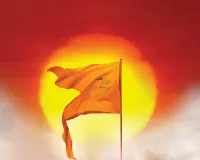


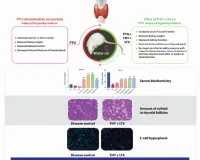
.jpg)
